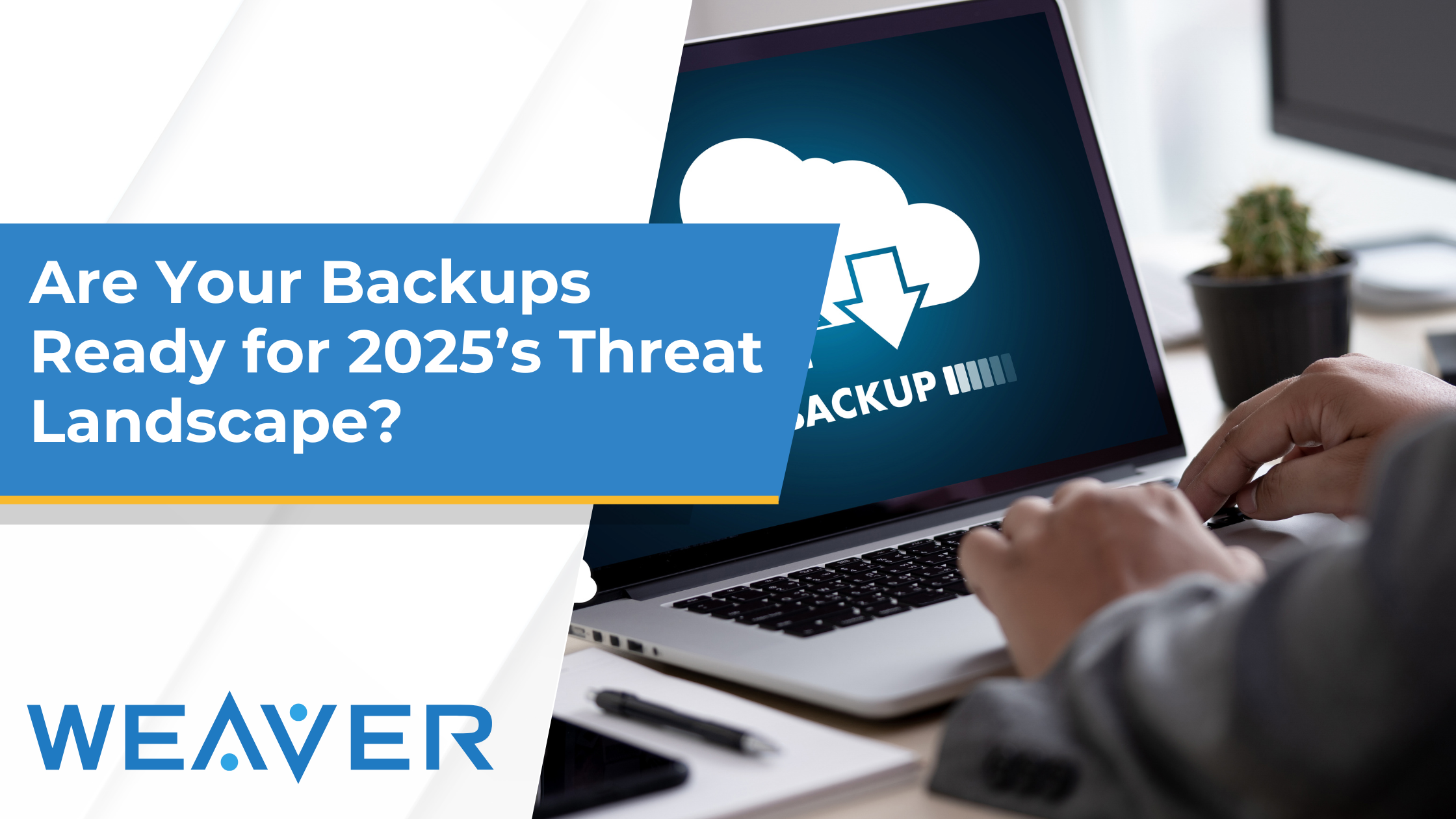In an era of increasing cyber threats and growing reliance on data, traditional backup solutions are no longer sufficient. The threat landscape in 2025 is evolving, and businesses must adopt modern, robust strategies to ensure their data is protected and recoverable. From ransomware attacks to natural disasters, your backup systems must go beyond simply storing data to becoming a proactive defense against downtime and loss.
Here’s how trends like immutable storage and Disaster Recovery as a Service (DRaaS) are transforming data protection and why they are essential for 2025.
The Growing Complexity of Data Threats
The cyber threat landscape has grown more sophisticated, with ransomware and insider threats leading the charge. These attacks don’t just encrypt your data; they often target backups, rendering them useless when you need them most. Beyond cybercrime, organizations also face risks from hardware failures, human error, and natural disasters, all of which can lead to significant data loss or downtime.
The Risks of Traditional Backups:
- Vulnerability to ransomware and malware.
- Lack of redundancy for physical disasters.
- Slow recovery times that disrupt operations.
- Limited scalability as data grows exponentially.
To address these challenges, organizations must rethink how they approach backups and embrace emerging technologies designed for resilience.
The Role of Immutable Storage
Immutable storage is emerging as a cornerstone of modern backup strategies. In this approach, once data is written, it cannot be altered or deleted, even by administrators. This makes it an excellent defense against ransomware and insider threats that target backups.
Key Benefits:
- Ransomware Protection: Hackers cannot encrypt or delete immutable backups, ensuring you always have a clean copy of your data.
- Data Integrity: Guarantees that stored data remains unchanged, providing confidence in its reliability.
- Compliance and Security: Many industries require data integrity as part of regulatory compliance, and immutable storage ensures you meet those standards.
Implementation Tips:
- Choose backup solutions that offer built-in immutability features.
- Integrate immutable storage with other data protection measures for comprehensive security.
Disaster Recovery as a Service (DRaaS)
When disaster strikes, the speed of recovery is just as important as having a backup. Disaster Recovery as a Service (DRaaS) provides a cloud-based solution that ensures quick and reliable recovery of systems and data. Unlike traditional backups that require manual intervention, DRaaS automates the process, reducing downtime and minimizing operational disruptions.
How DRaaS Works:
- Replication: Your critical systems and data are continuously replicated to a secure cloud environment.
- Automation: In the event of a failure, DRaaS automatically restores systems to their pre-disaster state.
- Flexibility: Scales with your organization’s needs, accommodating data growth and infrastructure changes.
Why It’s Essential for 2025:
- Business Continuity: DRaaS ensures your operations can continue with minimal interruptions, even during a major outage.
- Cost-Effectiveness: By leveraging cloud infrastructure, DRaaS eliminates the need for expensive on-premises disaster recovery setups.
- Global Accessibility: Allows businesses to recover systems and data from anywhere, supporting remote and hybrid work models.
Combining Backup and Recovery for Maximum Resilience
To prepare for 2025’s threats, organizations need a comprehensive data protection strategy that combines backups with disaster recovery. This includes:
- Regular Testing: Ensure your backups are recoverable by performing routine tests.
- Backup Redundancy: Maintain multiple copies of your data across different locations or cloud providers.
- Proactive Monitoring: Use advanced tools to monitor backup health and detect anomalies that could indicate an issue.
Together, these practices ensure your organization is not just storing data but is fully prepared to recover from any disruption.
2025 Backup Trends to Watch
- Cloud-Native Backups: Cloud-based solutions continue to grow, offering scalability, flexibility, and cost-effectiveness.
- AI-Driven Backup Management: Artificial intelligence is improving backup systems by predicting failures and optimizing recovery processes.
- End-to-End Encryption: Protecting data in transit and at rest remains critical, with more organizations adopting robust encryption protocols.
- Cybersecurity-Integrated Backups: Advanced solutions now include integrated security features to detect and mitigate threats targeting backups.
Why Modern Backups Matter
In 2025, your backups aren’t just about protecting data—they’re about ensuring business continuity, safeguarding your reputation, and staying ahead of evolving threats. With technologies like immutable storage and DRaaS, you can transform your backup strategy into a proactive shield against data loss.
Get Ahead of 2025’s Threats with Weaver Technologies
Is your backup strategy ready for the challenges of 2025? Weaver Technologies can help you implement cutting-edge solutions like immutable storage and Disaster Recovery as a Service. Contact us today for a consultation and ensure your data is secure, accessible, and recoverable when it matters most. Let’s build your resilience together.



